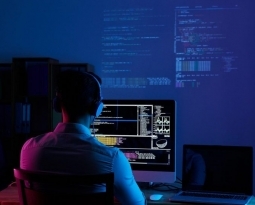North Carolina Patent of the Month – December 2021
It feels great when you reach your step count or active minutes throughout the day. Remembering to be active or tracking those steps has been made far simpler with wearable technology. However, the average device on the market may not be particularly accurate. Most users of fitbits and similar devices disregard the “calories burned” feature as they consider it inconsistent. There are certainly more accurate technologies out there, but these are often too bulky to be worn throughout the day.
Valencell, Inc. has been focused on transforming the science behind these wearable technologies and their biometric tracking capabilities. Their technology effectively tracks continuous heart rate, RR interval, cardiac efficiency, V02 max, blood pressure, and more.
Recently, the company has developed a device capable of measuring these biometrics from the ear. The user wears the earbud as usual and a series of sensors track biometrics. The sensors make contact with different parts of the ear. A sensor positioned:
- Near the inner-ear canal and tympanic membrane can accurately measure core body temperature;
- In contact with muscle tissue can measure muscle tension;
- Near the pinna and earlobe can monitor blood gas levels
- Behind the ear can measure skin temperature
- Near the ear canal can measure heartbeat, breathing rate, mouth motion etc.
This information – and more – is sensed, processed, and transmitted in real time to the user’s smartphone where it can be viewed and used to guide next steps. For instance, tracking heart rate during a workout can help indicate if the workout intensity needs to be increased or decreased. It can also offer insight into overall health.
This sensor system is meant to provide a less obtrusive solution to biometric monitoring. With applications in fitness and health and medical devices, Valencell uses patented and validated sensor technology to ensure the analytics are always accurate.
Are you developing new technology for an existing application? Did you know your development work could be eligible for the R&D Tax Credit and you can receive up to 14% back on your expenses? Even if your development isn’t successful your work may still qualify for R&D credits (i.e. you don’t need to have a patent to qualify). To find out more, please contact a Swanson Reed R&D Specialist today or check out our free online eligibility test.
Who We Are:
Swanson Reed is one of the U.S.’ largest Specialist R&D tax advisory firms. We manage all facets of the R&D tax credit program, from claim preparation and audit compliance to claim disputes.
Swanson Reed regularly hosts free webinars and provides free IRS CE and CPE credits for CPAs. For more information please visit us at www.swansonreed.com/webinars or contact your usual Swanson Reed representative.

















